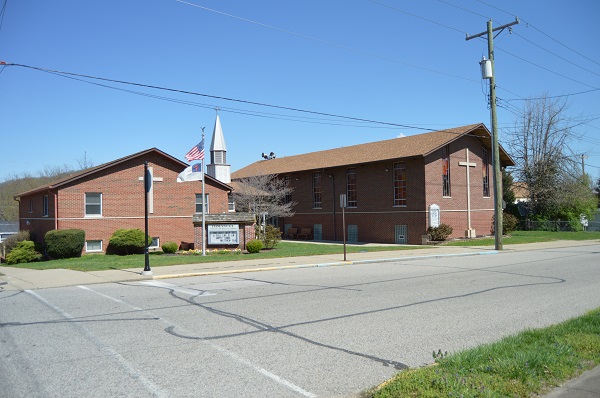The settlement of Bromley can be traced to the year 1784, when Prettyman Perry received a land grant from the United States Government of 2,000 acres. Soon thereafter, the Perry family began constructing a home on the property. This home, called the Landmark, still stands today on Shelby Street.
The need for a suitable road to link the western section of Kenton County to the City of Ludlow began to be discussed in 1846. In that year, George Anderson, who lived at the mouth of the Dry Creek between Ludlow and Bromley, held a meeting of interested residents. This group established a corporation to build the necessary road. Funds were raised and construction on the Dry Creek Turnpike (current Route 8) began. The turnpike provided easy access to employment opportunities in Ludlow and Covington. Now, residents could live in Bromley and do business in these neighboring cities. The result was a population boom from Bromley. Initially, the tollgate for the turnpike was located on the east side of Pleasant Run Creek in Ludlow. In 1872, the tollgate was removed to the Bromley side of the creek.

The construction of the turnpike through Bromley made the area a more desirable residential location. In 1848, Charles Collins acquired a portion of the original Perry estate. Collins immediately commissioned the design for a small town on his property. He named the town Bromley, after his hometown of Bromley, England.
By the 1860s, a public school was in operation. In 1893, the citizens of the town financed the construction of a permanent schoolhouse. The one-story brick building was constructed on Shelby Street.
As the village grew, residents began discussing the need for street and other improvements. In 1890, town meetings were held and the residents decided that incorporation should be sought. The Commonwealth of Kentucky officially approved the incorporation of the City of Bromley on May 23, 1890.
The 1890s witnessed the creation of two churches in the community. In 1892, a number of Bromley residents established the Bromley Christian Church on Kenton Street. Two years later, the First German Reformed Church was founded (currently Immanuel United Church of Christ).
A volunteer fire department was established in 1895 following a destructive fire that destroyed the Highhouse and Hilker Grocery. Residents, however, soon lost interest and the department dissolved. Another tragic fire in 1900 clearly demonstrated the need for a fire department. This fire destroyed eight homes and businesses. The citizens of the town met on October 4, 1900 and established the Bromley Volunteer Fire Department which still exists today.
In 1936, Bromley’s school system was merged with the Kenton County School District. This merger gave Bromley residents the opportunity to attend grades K-12 without paying tuition. Previous to this time, Bromley residents who wished to attend high school enrolled in the Ludlow schools. A new Bromley Elementary School was constructed in 1950 by the Kenton County School District.
Bromley suffered from periodic flooding throughout its history. Residents had become accustomed to moving out of their homes when the waters of the Ohio rose. No one, however, was prepared for the 1937 flood. A large portion of the city was submerged and the city was cut off from its neighbors for days. Homes were lifted from their foundations and carried down the river. The 1937 flood gave the residents of Bromley the impetus to construct Highwater Road. The road linked the city to Crescent Springs and would provided a needed exit route out of Bromley during any future flooding.
The 1950s brought controversy to the small community. In 1954, the Sanitation District No. 1 constructed a large sewage treatment plant in the city on Pike Street. Bromley residents opposed the facility from the beginning and argued that it should have been built in a more rural setting. The relationship between the plant and the city remained tense for several decades. Finally, the district closed the plant in 1979.
In 1982, the International Catfish Ranch opened in the former sanitation building. The restaurant and entertainment facility, however, was not a financial success. Several other restaurants followed, but none succeeded. The facility has been empty since 1994.
Kenton County School officials began plans to replace the Bromley Elementary School building in the late 1980s. The new school, however, was built in neighboring Villa Hills. In 1992, Bromley Elementary School closed. In time, the building was remodeled for use as an apartment building. Bromley students now attend River Ridge School in Villa Hills, Turkey Foot Middle School and Dixie Heights High School.
Bromley continues to be a small, tight-knit residential community. The churches and the volunteer fire department continue to draw the residents together and provide a strong sense of belonging and community pride.